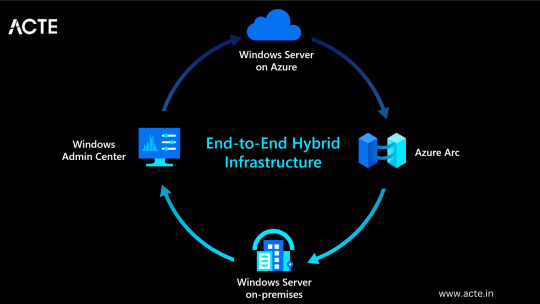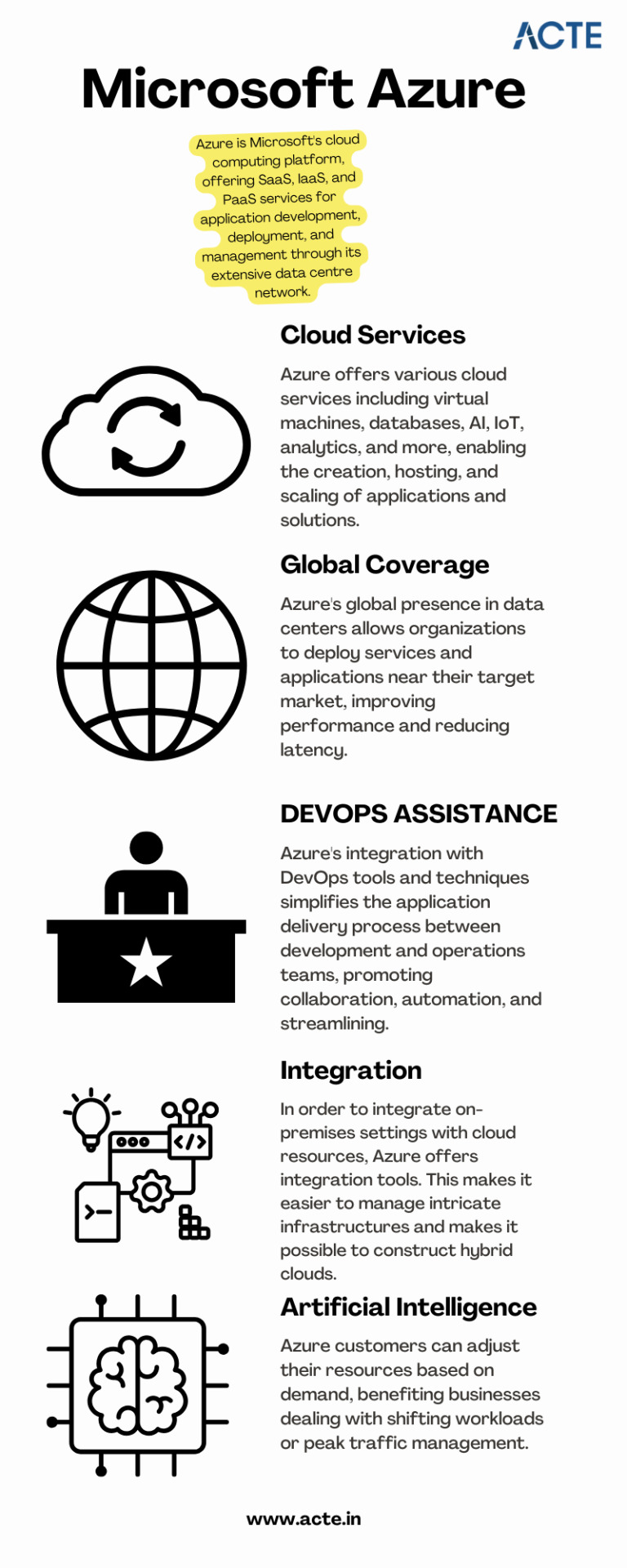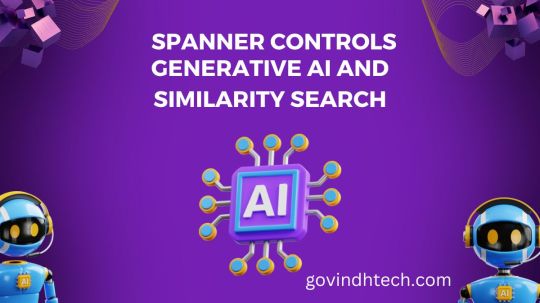#sla institute
Text
Best Software Training Course in Chennai
Become a Software Testing expert with SLA Institute in Chennai. Our courses are taught by industry-leading professionals, ensuring guaranteed placement assistance and the opportunity to land your dream job. Enroll now and start your journey to a successful career in software testing.
0 notes
Text
SLAS group Top stock market training institute .
We Proudly presents free workshop on Stock Market that is thoughtfully designed to teach techniques of Trading and Investing delivered by eminent domain experts. This workshop removes the wrong perceptions you may have related to trading in stocks/commodities markets and also teaches simple investing methods in stocks, mutual funds and insurance. If you think markets are complicated, we make this simplified for you.
Stock markets is a great place to make money and build wealth.But trading and investing in Stock Markets requires you to be great friends with it to understand it deeply!
Let this 2 hours enriching free workshop on Stock markets organised by JJ Slas Group be a great opportunity for you to learn about and build a bond with stock markets.
0 notes
Text
"..."The governor of the Royal African Company was James II, otherwise known as the Duke of York," she (Esther Stanford-Xosei) noted, referring to one of the major business enterprises involved directly in enslaving and transporting Africans in the 17th and 18th centuries.
"They also found ways of branding African people with the inscription 'DY,' for Duke of York," Stanford-Xosei said. So many slaves will literally have had the initials of a senior member of the royal family permanently and indelibly etched onto their bodies.
Contemporary members of the British royal family, including Prince William, Harry's brother and the heir to the throne, have expressed sadness about their links to the slave trade, but none has ever apologized for the direct role their ancestors played.
"The appalling atrocity of slaver forever stains our history," William said on a visit to Jamaica last year. "I want to express my profound sorrow."
"The reason why he doesn't go further is that he's aware [of] what it will mean to actually apologize, in terms of the legal obligation to make reparation," suggested Stanford-Xosei. She said William and his family feared it would cost the monarchy, "not only money, but status… He will be exposing the criminality of this institution."
Historians say it's impossible to calculate exactly how much wealth the monarchy generated from trafficking human beings, but when William and Kate visited Jamaica last year, they were met by protests demanding not just an apology, but reparations.
The trip was criticized as a damaging throwback to the days of colonialism, including a meeting with local children who were kept apart from the royal couple by a fence.
Prince Harry is the one royal who has addressed his family's connection to slavery more explicitly.
In Spare, he acknowledges that the monarchy rests upon wealth generated by "exploited workers and thuggery, annexation and enslaved people."
"In terms of Prince Harry going this far, it's really, really important," Stanford-Xosei told CBS News. "We can see the establishment reaction, including… the establishment media, who are seeking to belittle him, demonize him..."
19 notes
·
View notes
Text
A Complete Guide to Mastering Microsoft Azure for Tech Enthusiasts
With this rapid advancement, businesses around the world are shifting towards cloud computing to enhance their operations and stay ahead of the competition. Microsoft Azure, a powerful cloud computing platform, offers a wide range of services and solutions for various industries. This comprehensive guide aims to provide tech enthusiasts with an in-depth understanding of Microsoft Azure, its features, and how to leverage its capabilities to drive innovation and success.

Understanding Microsoft Azure
A platform for cloud computing and service offered through Microsoft is called Azure. It provides reliable and scalable solutions for businesses to build, deploy, and manage applications and services through Microsoft-managed data centers. Azure offers a vast array of services, including virtual machines, storage, databases, networking, and more, enabling businesses to optimize their IT infrastructure and accelerate their digital transformation.

Cloud Computing and its Significance
Cloud computing has revolutionized the IT industry by providing on-demand access to a shared pool of computing resources over the internet. It eliminates the need for businesses to maintain physical hardware and infrastructure, reducing costs and improving scalability. Microsoft Azure embraces cloud computing principles to enable businesses to focus on innovation rather than infrastructure management.
Key Features and Benefits of Microsoft Azure
Scalability: Azure provides the flexibility to scale resources up or down based on workload demands, ensuring optimal performance and cost efficiency.
Vertical Scaling: Increase or decrease the size of resources (e.g., virtual machines) within Azure.
Horizontal Scaling: Expand or reduce the number of instances across Azure services to meet changing workload requirements.
Reliability and Availability: Microsoft Azure ensures high availability through its globally distributed data centers, redundant infrastructure, and automatic failover capabilities.
Service Level Agreements (SLAs): Guarantees high availability, with SLAs covering different services.
Availability Zones: Distributes resources across multiple data centers within a region to ensure fault tolerance.
Security and Compliance: Azure incorporates robust security measures, including encryption, identity and access management, threat detection, and regulatory compliance adherence.
Azure Security Center: Provides centralized security monitoring, threat detection, and compliance management.
Compliance Certifications: Azure complies with various industry-specific security standards and regulations.
Hybrid Capability: Azure seamlessly integrates with on-premises infrastructure, allowing businesses to extend their existing investments and create hybrid cloud environments.
Azure Stack: Enables organizations to build and run Azure services on their premises.
Virtual Network Connectivity: Establish secure connections between on-premises infrastructure and Azure services.
Cost Optimization: Azure provides cost-effective solutions, offering pricing models based on consumption, reserved instances, and cost management tools.
Azure Cost Management: Helps businesses track and optimize their cloud spending, providing insights and recommendations.
Azure Reserved Instances: Allows for significant cost savings by committing to long-term usage of specific Azure services.
Extensive Service Catalog: Azure offers a wide range of services and tools, including app services, AI and machine learning, Internet of Things (IoT), analytics, and more, empowering businesses to innovate and transform digitally.
Learning Path for Microsoft Azure
To master Microsoft Azure, tech enthusiasts can follow a structured learning path that covers the fundamental concepts, hands-on experience, and specialized skills required to work with Azure effectively. I advise looking at the ACTE Institute, which offers a comprehensive Microsoft Azure Course.

Foundational Knowledge
Familiarize yourself with cloud computing concepts, including Infrastructure as a Service (IaaS), Platform as a Service (PaaS), and Software as a Service (SaaS).
Understand the core components of Azure, such as Azure Resource Manager, Azure Virtual Machines, Azure Storage, and Azure Networking.
Explore Azure architecture and the various deployment models available.
Hands-on Experience
Create a free Azure account to access the Azure portal and start experimenting with the platform.
Practice creating and managing virtual machines, storage accounts, and networking resources within the Azure portal.
Deploy sample applications and services using Azure App Services, Azure Functions, and Azure Containers.
Certification and Specializations
Pursue Azure certifications to validate your expertise in Azure technologies. Microsoft offers role-based certifications, including Azure Administrator, Azure Developer, and Azure Solutions Architect.
Gain specialization in specific Azure services or domains, such as Azure AI Engineer, Azure Data Engineer, or Azure Security Engineer. These specializations demonstrate a deeper understanding of specific technologies and scenarios.
Best Practices for Azure Deployment and Management
Deploying and managing resources effectively in Microsoft Azure requires adherence to best practices to ensure optimal performance, security, and cost efficiency. Consider the following guidelines:
Resource Group and Azure Subscription Organization
Organize resources within logical resource groups to manage and govern them efficiently.
Leverage Azure Management Groups to establish hierarchical structures for managing multiple subscriptions.
Security and Compliance Considerations
Implement robust identity and access management mechanisms, such as Azure Active Directory.
Enable encryption at rest and in transit to protect data stored in Azure services.
Regularly monitor and audit Azure resources for security vulnerabilities.
Ensure compliance with industry-specific standards, such as ISO 27001, HIPAA, or GDPR.
Scalability and Performance Optimization
Design applications to take advantage of Azure’s scalability features, such as autoscaling and load balancing.
Leverage Azure CDN (Content Delivery Network) for efficient content delivery and improved performance worldwide.
Optimize resource configurations based on workload patterns and requirements.
Monitoring and Alerting
Utilize Azure Monitor and Azure Log Analytics to gain insights into the performance and health of Azure resources.
Configure alert rules to notify you about critical events or performance thresholds.
Backup and Disaster Recovery
Implement appropriate backup strategies and disaster recovery plans for essential data and applications.
Leverage Azure Site Recovery to replicate and recover workloads in case of outages.
Mastering Microsoft Azure empowers tech enthusiasts to harness the full potential of cloud computing and revolutionize their organizations. By understanding the core concepts, leveraging hands-on practice, and adopting best practices for deployment and management, individuals become equipped to drive innovation, enhance security, and optimize costs in a rapidly evolving digital landscape. Microsoft Azure’s comprehensive service catalog ensures businesses have the tools they need to stay ahead and thrive in the digital era. So, embrace the power of Azure and embark on a journey toward success in the ever-expanding world of information technology.
#microsoft azure#cloud computing#cloud services#data storage#tech#information technology#information security
6 notes
·
View notes
Text
DFCU Bank Uganda Jobs 2022 – Business Systems SupportSpecialist

Job Title: Business Systems Support Specialist – DFCU Bank Uganda Jobs 2022
Organisation: DFCU Bank
Duty Station: Kampala, Uganda
Reports to: Manager (Applications and Channels)
DFCU Bank Profile:
DFCU Bank is a fast growing commercial bank offering a variety of innovative products and services. DFCU Limited was started by the Commonwealth Development Corporation (CDC) of the United Kingdom and the Government of Uganda through the Uganda Development Corporation (UDC) under the name of Development Finance Company of Uganda Limited. Later restructuring brought in DEG (of Germany) and International Finance Corporation (IFC) as equal partners with CDC and UDC, each having a 25% stake in the company. Its objective was to support long-term development projects whose financing needs and risk did not appeal to the then existing financial commercial lending institutions.
Job Summary:
Reporting to the Manager- Applications and Channels, the Business Systems Support Specialist is responsible for providing oversight on the day-to-day technical activities on back-office processing systems (non-channel) used by internal customers to facilitate internal processing through conducting regular service review engagements with vendors, documentation for all projects and change implementation related to business systems across the products and channel partners while adhering to bank policies and SLA standards.
Roles and responsibilities:
- Supervise the Application administrators supporting the bank’s back -office (non-channel) Applications.
- Escalation point for all internal Applications (back-office systems) on performance challenges.
- Participate in the IT projects change implementation & operations programs in accordance with the banks policies and standards; UAT testing, deployment activities into the production environment, post implementation reviews, operations and disaster planning and recovery.
- Monitoring and Performance Reporting on the Bank’s Business support applications.
- Coordinating regular field/technical service review engagements with service providers (including external third-party vendors and internal L3 support) – per established review framework (e.g., performance reviews, audits etc).
- Supporting L2 incident response, problem resolution and continuous improvement of the business technology service delivery.
- Document, advise and lead Service lifecycle management (SLM) activities for the bank ecosystem including software maintenance routines, license renewals and upgrades.
- Support the audit management process including audit issue resolution, and closure.
- Identify and report any exceptions that present unnecessary cost, risk, or degradation of customer experience to the relevant stakeholders.
- Assess all the configuration management (change configuration/release management) processes.
Minimum Qualifications:
- The ideal candidate for the DFCU Bank Business Systems Support Specialist job must hold a Bachelor of Science in Computer Science, IT, Engineering, or other numerical biased field from a reputable university.
- Certification in database management, digital finance practices, instant payments, and technology governance (ITIL etc.) are preferred.
- Three years of technical experience supporting bank IT applications and back-office applications in medium to large organizations.
- Practical hands-on Banking Applications Support skills.
- Exceptional oral and written communication skills with the ability to communicate clearly and persuasively, interpret documents, understand procedures, write reports and correspondence; speak clearly to third parties and fellow staff members.
- Knowledge of practical application of business concepts & administration procedures.
- Advanced hands-on systems Computing skills.
- Analytical Thinking & Complex Problem solving.
- Curious, engaging, detail oriented and organized.
- High level of integrity and ethical standards.
- Excellent interpersonal, verbal, written, communications and independent judgement skills.
- Ability to prioritize work.
- Inspire Commitment –Actions and behaviors are consistent with words.
- Self-Development – Pursues positive change in self and organization. Drives own personal development plan.
How To Apply for DFCU Bank Uganda Jobs 2022
If you believe you meet the requirements as noted above, please forward your application with a detailed CV including your present position and copies of relevant professional/academic certificates (University Transcript, O & A level), to the email address indicated below;
[email protected]
dfcu Bank is committed to give equal opportunities in employment and aims to ensure that it does not discriminate against gender or race. Only short-listed candidates will be contacted through +256 312 300391.
Disclaimer: dfcu Bank does not solicit/accept payment in cash/kind from prospective candidates in exchange for shortlisting or job placement. Any candidate who engages in this kind of transaction is aiding and abetting fraud and will be automatically disqualified.
Closing Date: 29th July 2022
For similar Jobs in Uganda today and great Uganda jobs, please remember to subscribe using the form below:
NOTE:
No employer should ask you for money in return for advancement in the recruitment process or for being offered a position. Please contact Fresher Jobs Uganda if it ever happens with any of the jobs that we advertise.
Read the full article
3 notes
·
View notes
Text
Boomi Managed Services

The Power of Boomi Managed Services: Streamlining Your Integration Journey
Boomi’s iPaaS (Integration Platform as a Service) is a market-leading solution that facilitates seamless connectivity between applications, systems, and data. However, managing this powerful platform can demand significant time and internal resources. Enter Boomi Managed Services, a way to offload the technical complexities and ensure your environment delivers maximum value.
What are Boomi Managed Services?
Boomi Managed Services are provided by specialized partners who handle the day-to-day operation of your Boomi platform. This includes tasks like:
Monitoring and Maintenance: Proactive monitoring to identify and resolve issues before they disrupt business processes.
Upgrades and Updates: Ensuring your platform stays up-to-date with the latest features and security patches.
Incident Management: Swift response to errors or outages to minimize downtime.
Performance Optimization: Constant analysis and improvements to keep your integrations running at peak efficiency.
Strategic Guidance: Expert advice on best practices and new opportunities to maximize your Boomi investment.
Why Consider Boomi Managed Services?
Focus on Core Business: By offloading Boomi management, your in-house IT team can focus on strategic initiatives that directly drive business growth.
Reduce Operational Costs: Managed services can help lower your Boomi platform’s total cost of ownership (TCO) by optimizing resource usage and preventing unexpected expenses.
Accelerate Time-to-Value: A well-run Boomi platform facilitates faster business outcomes and a greater return on your investment.
Access Specialized Expertise: Managed service providers have deep Boomi expertise that can be difficult to acquire and maintain in-house.
Enhance Scalability: Easily scale your Boomi integrations to meet evolving business needs without hiring additional staff.
Choosing a Boomi Managed Services Partner
Selecting the right partner is crucial for a successful managed services engagement. Consider:
Experience and Certifications: Look for providers with proven Boomi expertise and relevant certifications.
Service-Level Agreements (SLAs): Choose SLAs that align with your business requirements for uptime and response times.
Industry Specialization: Some providers focus on specific industries, offering valuable domain knowledge.
Flexibility: Find a provider offering tailored service packages to meet your needs.
The Future of Integration
Boomi Managed Services are a powerful enabler in the fast-paced, integration-dependent business landscape. By partnering with an expert, you can liberate your resources, optimize operations, and drive innovation through streamlined connectivity across your enterprise.
youtube
You can find more information about Dell Boomi in this Dell Boomi Link
Conclusion:
Unogeeks is the No.1 IT Training Institute for Dell Boomi Training. Anyone Disagree? Please drop in a comment
You can check out our other latest blogs on Dell Boomi here – Dell Boomi Blogs
You can check out our Best In Class Dell Boomi Details here – Dell Boomi Training
Follow & Connect with us:
———————————-
For Training inquiries:
Call/Whatsapp: +91 73960 33555
Mail us at: [email protected]
Our Website ➜ https://unogeeks.com
Follow us:
Instagram: https://www.instagram.com/unogeeks
Facebook: https://www.facebook.com/UnogeeksSoftwareTrainingInstitute
Twitter: https://twitter.com/unogeek
0 notes
Text
3D Printed Medical Device Market Huge Growth in Future Scope 2024-2030 | GQ Research
The 3D Printed Medical Device market is set to witness remarkable growth, as indicated by recent market analysis conducted by GQ Research. In 2023, the global 3D Printed Medical Device market showcased a significant presence, boasting a valuation of US$ 3.14 Billion. This underscores the substantial demand for 3D Printed Medical Device technology and its widespread adoption across various industries.
Get Sample of this Report at https://gqresearch.com/request-sample/global-3d-printed-medical-device-market/

Projected Growth: Projections suggest that the 3D Printed Medical Device market will continue its upward trajectory, with a projected value of US$ 6.77 Billion by 2030. This growth is expected to be driven by technological advancements, increasing consumer demand, and expanding application areas.
Compound Annual Growth Rate (CAGR): The forecast period anticipates a Compound Annual Growth Rate (CAGR) of 16.55 %, reflecting a steady and robust growth rate for the 3D Printed Medical Device market over the coming years.
Technology Adoption: In the 3D Printed Medical Device market, technology adoption is pivotal for advancing patient care, surgical outcomes, and manufacturing efficiency. Manufacturers leverage cutting-edge 3D printing technologies such as selective laser sintering (SLS), stereolithography (SLA), and direct metal laser sintering (DMLS) to produce complex, patient-specific medical devices with precision and accuracy. Additionally, the integration of computer-aided design (CAD) and computer-aided manufacturing (CAM) software enables the customization of medical devices to match individual patient anatomy, enhancing fit and functionality. Furthermore, advancements in biocompatible materials and post-processing techniques ensure the safety and efficacy of 3D printed medical devices.
Application Diversity: The 3D Printed Medical Device market encompasses a diverse range of applications across various medical specialties, including orthopedics, cardiology, dentistry, maxillofacial surgery, and prosthetics. From patient-specific implants and surgical guides to anatomical models and dental restorations, 3D printing technology enables the production of customized devices tailored to individual patient needs. Each application segment addresses specific medical conditions and treatment modalities, offering improved clinical outcomes, reduced surgical times, and enhanced patient satisfaction.
Consumer Preferences: Consumer preferences in the 3D Printed Medical Device market are driven by factors such as product quality, safety, regulatory compliance, and affordability. Healthcare providers prioritize medical devices that meet stringent quality standards and regulatory requirements, ensuring patient safety and efficacy. Additionally, clinicians value devices that offer precise anatomical fit, optimal functionality, and ease of use during surgical procedures. Moreover, healthcare institutions seek cost-effective solutions that provide value for money in terms of improved patient outcomes and reduced healthcare costs over the long term.
Technological Advancements: Technological advancements in the 3D Printed Medical Device market focus on enhancing printing speed, resolution, and material properties to expand the range of applications and improve patient care. Innovations in printer hardware, such as multi-material printing capabilities and high-resolution printing heads, enable the production of complex, multi-functional medical devices with superior surface finish and mechanical properties. Furthermore, advancements in biocompatible materials, including resorbable polymers, titanium alloys, and bioactive ceramics, offer improved biocompatibility, osseointegration, and tissue regeneration for implanted medical devices. Additionally, the integration of advanced imaging techniques such as CT and MRI scans facilitates the creation of patient-specific medical devices with unparalleled accuracy and precision.
Market Competition: The 3D Printed Medical Device market is characterized by intense competition among medical device manufacturers, contract manufacturers, and healthcare providers, driven by factors such as product innovation, quality, pricing, and regulatory compliance. Established medical device companies leverage their expertise in research and development, regulatory affairs, and distribution networks to introduce innovative 3D printed medical devices that address unmet clinical needs and improve patient outcomes. Meanwhile, contract manufacturers and startups focus on niche applications and customization services to differentiate themselves in the market. Additionally, strategic partnerships with healthcare institutions, research centers, and regulatory agencies play a significant role in expanding market presence and gaining competitive advantage.
Environmental Considerations: Environmental considerations are increasingly important in the 3D Printed Medical Device market, with stakeholders focusing on sustainable materials, waste reduction, and energy-efficient manufacturing processes. Manufacturers are exploring eco-friendly materials such as biodegradable polymers, recycled metals, and bioactive ceramics to minimize environmental impact and promote circular economy principles. Moreover, efforts are underway to implement closed-loop recycling systems for waste generated during the 3D printing process, reducing material waste and energy consumption. Additionally, adherence to stringent environmental regulations and certifications, such as ISO 14001 and RoHS compliance, demonstrates a commitment to sustainability and responsible manufacturing practices within the medical device industry.
Top of Form
Top of FormRegional Dynamics: Different regions may exhibit varying growth rates and adoption patterns influenced by factors such as consumer preferences, technological infrastructure and regulatory frameworks.
Key players in the industry include:
Stratasys Ltd.
3D Systems Corporation
Materialise NV
Envisiontec GmbH
Eos GmbH Electro Optical Systems
Renishaw PLC
3T RPD Ltd.
Prodways Machines
Arcam AB
GE Additive.
The research report provides a comprehensive analysis of the 3D Printed Medical Device market, offering insights into current trends, market dynamics and future prospects. It explores key factors driving growth, challenges faced by the industry, and potential opportunities for market players.
For more information and to access a complimentary sample report, visit Link to Sample Report: https://gqresearch.com/request-sample/global-3d-printed-medical-device-market/
About GQ Research:
GQ Research is a company that is creating cutting edge, futuristic and informative reports in many different areas. Some of the most common areas where we generate reports are industry reports, country reports, company reports and everything in between.
Contact:
Jessica Joyal
+1 (614) 602 2897 | +919284395731
Website - https://gqresearch.com/
#3DPrintedMedicalDevices#PersonalizedHealthcare#InnovationInHealthcare#MedicalTechnology#OrthopedicImplants
0 notes
Text
SAP Basis Contract

Understanding SAP Basis Contracts: Key Concepts and Applications
SAP Basis is the foundation of any SAP implementation, responsible for infrastructure, system administration, and performance optimization. Basis consultants play a vital role in ensuring smooth operations and managing complex landscapes. One aspect of their work can involve utilizing SAP Basis Contracts. Let’s delve into what they are and how they’re used.
What is an SAP Basis Contract?
In essence, an SAP Basis Contract is a type of agreement that outlines the scope of support, services, and responsibilities between a client and an SAP Basis consulting firm or individual consultant. It’s a crucial document that helps both parties align expectations and manage the relationship effectively.
Key Components of an SAP Basis Contract
Here are common elements usually found in an SAP Basis Contract:
Scope of Work: Detailed description of the specific SAP Basis tasks and services to be provided. This could include installation, configuration, upgrades, maintenance, monitoring, performance tuning, troubleshooting, and more.
Service Level Agreements (SLAs): Clearly defined metrics for response times, issue resolution times, system availability targets, and other performance indicators.
Pricing and Payment Terms: The pricing model (e.g., hourly, retainer, fixed-fee), payment schedules, and any additional costs.
Duration and Termination: The length of the contract, renewal options, and conditions for termination.
Roles and Responsibilities: Defines the tasks each party (the client and the consultant) is responsible for.
Confidentiality and Intellectual Property: Protects sensitive information and establishes ownership of work products.
Dispute Resolution: Outlines procedures for resolving conflicts or disagreements.
Why Use SAP Basis Contracts?
Here are the primary benefits of having well-structured Basis contracts:
Clarity and Alignment: Provides a clear understanding of roles, responsibilities, and expectations, preventing misunderstandings.
Objectivity: SLAs set performance standards, making accountability easier.
Risk Mitigation: Addresses potential risks and outlines dispute resolution processes.
Cost Control: Transparent pricing models help manage expenses and budgeting.
Relationship Management: Fosters a strong professional relationship and reduces potential issues that may arise.
Types of SAP Basis Contracts
Time and Materials: Common for short-term projects or where the scope is difficult to define upfront. Consultants are paid on an hourly or daily basis.
Fixed-Price: Suitable for projects with well-defined scope and deliverables. A fixed price is agreed upon.
Retainer: Provides ongoing support for a set monthly fee, a good option for predicable maintenance and system support needs.
Tips for Effective SAP Basis Contracts
Be Specific: The more detailed the contract, the better the protection for both parties.
Define SLAs Carefully: SLAs should be realistic, measurable, and aligned with business needs.
Prioritize Communication: Open communication channels and regular status updates are essential.
Involve Legal Counsel: Have legal professionals review the contract, particularly for complex arrangements.
Conclusion
SAP Basis Contracts are fundamental for ensuring successful partnerships between clients and SAP Basis consultants. By understanding the key components, benefits, and best practices, organizations can establish clear expectations, control costs, and optimize the performance of their SAP landscapes.
youtube
You can find more information about SAP BASIS in this SAP BASIS Link
Conclusion:
Unogeeks is the No.1 IT Training Institute for SAP BASIS Training. Anyone Disagree? Please drop in a comment
You can check out our other latest blogs on SAP BASIS here – SAP BASIS Blogs
You can check out our Best In Class SAP BASIS Details here – SAP BASIS Training
Follow & Connect with us:
———————————-
For Training inquiries:
Call/Whatsapp: +91 73960 33555
Mail us at: [email protected]
Our Website ➜ https://unogeeks.com
Follow us:
Instagram: https://www.instagram.com/unogeeks
Facebook:https://www.facebook.com/UnogeeksSoftwareTrainingInstitute
Twitter: https://twitter.com/unogeek
#Unogeeks #training #Unogeekstraining
0 notes
Text
Cloud Migration Best Practices for Financial Services/ FinTech Companies
Cloud migration has become a strategic imperative for financial services institutions seeking to enhance their operational efficiency, scalability, and cost-effectiveness. However, migrating sensitive financial data and applications to the cloud requires careful planning and adherence to best practices. This article will explore key considerations and best practices for successful cloud migration within the financial services industry.
Comprehensive Security and Compliance: Financial institutions handle vast amounts of sensitive data, making security and compliance paramount. When migrating to the cloud, choosing a cloud provider that complies with relevant regulations (e.g., PCI-DSS, GDPR, and SOX) is crucial. Implementing robust security measures, such as encryption, access controls, and monitoring, is essential to protect data from unauthorized access and breaches.
Data Governance and Residency: Financial organizations must understand data governance requirements and ensure compliance throughout the cloud migration process. Consider data residency regulations and industry-specific compliance standards when selecting a cloud provider. Clarify the responsibilities of data ownership, privacy, and protection to avoid potential regulatory violations.
Thorough Risk Assessment: Conduct a comprehensive risk assessment before initiating cloud migration to identify potential vulnerabilities and mitigate associated risks. Evaluate the cloud provider's security controls, assess potential threats, and develop a risk mitigation strategy. Review and update risk assessments regularly to align with evolving security threats and regulatory changes.
Scalability and Performance Optimization: Financial services require robust and scalable infrastructure to handle peak demand periods efficiently. Consider cloud solutions that provide auto-scaling capabilities and workload optimization tools. Performance monitoring and optimization ensure that applications and services perform optimally in the cloud environment.
Disaster Recovery and Business Continuity: Maintaining uninterrupted operations is critical for financial institutions. Develop a robust disaster recovery plan (DRP) to address potential disruptions. Implement data replication, backup strategies, and failover mechanisms to ensure business continuity. Regularly test the DRP to validate its effectiveness and make necessary improvements.
Migration Strategy and Phased Approach: A well-defined migration strategy is vital for successful cloud adoption. Begin with a phased approach, starting with less critical applications and gradually progressing to mission-critical systems. This approach allows for incremental learning, risk mitigation, and fine-tuning of cloud operations.
Employee Training and Change Management: Cloud migration involves a shift in technology and processes. Invest in comprehensive employee training programs to ensure smooth adoption and usage of cloud services. Implement change management processes to address cultural and organizational challenges associated with the migration process.
Vendor Management and Service Level Agreements (SLAs): Carefully evaluate cloud service providers and ensure their offerings align with the unique needs of financial institutions. Review SLAs to ensure they meet business requirements, including data availability, performance guarantees, and support responsiveness. Establish effective vendor management processes to maintain a productive partnership and address any emerging issues promptly.
Cloud migration in the financial services industry offers numerous benefits, but it also requires diligent planning, adherence to regulatory requirements, and robust security measures. Financial institutions can successfully navigate their cloud migration journey by following best practices such as comprehensive security and compliance, thorough risk assessments, and scalable infrastructure design. Financial organizations can achieve improved operational efficiency, cost savings, and competitive advantage in the digital era with careful consideration of data governance, disaster recovery planning, and effective change management.
For more details about our services please visit our website- Flentas Technologies
0 notes
Text
Spanner Controls Huge Generative AI and Similarity Search

Spanner Features
With a 99.999% availability SLA, Spanner, a fully managed, highly available distributed database service from Google Cloud, offers relational semantics and almost infinite horizontal scalability for both relational and non-relational workloads. Customers want scaling as data volumes increase and applications place more demands on their operational databases. Recently, Google introduced support for exact closest neighbor (KNN) search in preview for vector embeddings, enabling enterprises to develop generative AI at almost infinite scale. Because Spanner has all of these features, you can do vector search on your transactional data without transferring it to a different database, keeping things operationally simple.
Google explains in this blog post how vector search may improve general artificial intelligence applications and how the underlying architecture of Spanner allows for very large-scale vector search deployments. They also go over the many operational advantages of using Spanner as opposed to a specialized vector database.
Vector embeddings and generative AI
Numerous new applications are being made possible by generative AI, such as individualized conversational virtual assistants and the ability to create original material just by texting suggestions. The foundation of generative AI is pre-trained large language models (LLMs), which make it possible for developers with less experience in machine learning to create gen AI apps with ease. However, as LLMs may sometimes have hallucinations and provide false information, integrating LLMs with operational databases and vector search can aid in the development of Gen AI applications that are based on real-time, contextual, and domain-specific data, resulting in high-quality AI-assisted user experiences.
Suppose a financial institution employs a virtual assistant to assist clients with account-related inquiries, handle accounts, and suggest financial solutions that best suit each client’s particular requirements. The customer’s decision-making process may take place across many chat sessions with the virtual assistant in complicated settings. The virtual assistant may locate the most pertinent material by using vector search across the discussion history, resulting in a high-caliber, highly relevant, and educational chat experience.
Utilizing vector embeddings—numerical representations of text, image, or video produced by embedding models—vector search assists the gen AI application in determining the most pertinent information to include in LLM prompts, allowing for the customization and enhancement of the LLM’s responses. The distance between vector embeddings may be used to do vector search. The content of the embeddings is increasingly similar the closer they are in the vector space.
With Spanner, you may virtually expand the scale of vector search
Vector workloads, such as the financial virtual assistant example mentioned above, may readily grow to extremely high sizes when they are required to service a large number of customers. Both a vast number of vectors (more than 10 billion, for example) and queries per second (more than millions of QPS) may be found in large-scale vector search workloads. It should come as no surprise that many database systems may find this difficult.
However, a large number of these searches are highly partitionable, meaning that each search is limited to the data that is connected to a certain person. Because Spanner effectively shrinks the search area to provide precise, timely results with little latency, these workloads are well suited for Spanner KNN search. Spanner supports vector search on trillions of vectors for highly partitionable workloads thanks to its horizontally scalable design.
To keep the application simple, Spanner also allows you to query and filter vector embeddings using SQL. It is simple to combine regular searches with vector search and to integrate vector embeddings with operational data using SQL. For instance, before doing a vector search, you may effectively filter rows of interest using secondary indexes. Like any other query on your operational data, Spanner’s vector search queries deliver new, real-time data as soon as transactions are committed.
Spanner offers resource efficiency and operational simplicity
Additionally, Google Spanner in-database vector search features streamline your operational process by removing the expense and complexity of maintaining a separate vector database. Vector embeddings can take advantage of all of Spanner features, such as high 99.999% availability, managed backups, point-in-time recovery (PITR), security and access control features, and change streams, because they are stored and managed in the same manner as operational data in Spanner. Better resource usage and cost reductions are made possible by the sharing of compute resources between operational and vector queries. Furthermore, Spanner’s PostgreSQL interface supports these features as well, providing customers transitioning from PostgreSQL with a recognizable and portable interface.
Additionally, Spanner integrates with well-known AI development tools like Document Loader, Memory, and LangChain Vector Store, making it simple for developers to create AI applications using the tools of their choice.
Beginning
Vector search skills have gained renewed attention with the emergence of Gen AI. Spanner is well suited to handle your large-scale vector search requirements on the same platform that you currently depend on for your demanding, distributed workloads, thanks to its nearly infinite scalability and support for KNN vector search.
Read more on govindhtech.com
#spannercontrols#spanner#generativeai#spannerfeatures#artificialintelligence#technews#technology#govindhtech
0 notes
Text
SLAS group Best stock market training institute in Bhubaneswar.
We are committed to teaching the skills one needs to make smarter investment decisions by using the unique supply and demand strategy, technical tools and chart analysis . We provide the best stock market courses in Bhubaneswar |Mumbai |Kolkata|Raipur|Lucknow|Hyderabad |Bangalore. Our courses include instruction from experienced professional traders, hands-on trading using state-of-the-art equipment and tools, and a framework for building a customized trading plan.
There are people who have lost lacs of Rupees in Stock Market due to lack of Training, We provide the best Stock Market strategies and option strategies to help recover the losses and also make consistent profits .
0 notes
Text
Judy Fields

(1939-2019)
Judy Field, a retired faculty member from the School of Information Sciences (SIS), Wayne State University, died June 29, 2019. A graduate of the University of Michigan, with a bachelor's degree in business administration and a master's degree in library science, Judy held a variety of leadership positions over a 50-year career. Before joining the SIS faculty as senior lecturer in 1989, Judy Field served as Library Manager, Western Electric/Bell Telephone Laboratories, Indianapolis, IN; Director, University of Michigan, Institute for International Commerce Library; Head, General Reference Department, Flint Public Library, Flint, MI; Director, Legislative Reference Library, Minnesota State Legislature, St. Paul, MN.
Judy Field was very active in the Special Library Association (SLA) where she served as President 1997-1998. For more than a decade Judy was involved in IFLA, where she served as Chair, Division III (Library Services) and as member of the Professional Committee and member of the Governing Board (2009-2011). She was active and held positions in other professional associations, such as the American Society of Information Science and Technology (ASIST), Michigan Library Association (MLA) and the Association of Records Managers and Administrators (ARMA). She was an external review panel member or chair for numerous accreditation visits conducted by the Committee on Accreditation (COA) of the American Library Association (ALA).
Judy was invited as speaker at numerous national and international professional events. She published several articles and opinion pieces and received numerous awards from a variety of national and international professional organizations. National directories included biographical notes that highlight Judy Field's professional career (Who's Who in America, Who's Who of American Women, Who's Who in the Midwest, and Who's Who in Library and Information Services).
Upon her retirement from Wayne State, Judy established a generous fund, the Judith J. Field Scholarship, aimed at recognizing scholastic achievement and innovation in approach to librarianship.
Judy's impact on her students, on her colleagues, on SIS, and on the library and information science profession was immeasurable, and her loss is felt deeply throughout the campus and the library world. She was a dedicated educator and a passionate professional, known for her keen sense of humor and her unique sense of wisdom, which she was always eager to share. Judy's kindness and generosity will be sorely missed, but her spirit lives on.
0 notes
Text
Bookkeeping Outsourcing Company
In today's fast-paced business environment, many companies are turning to outsourcing to streamline their operations and focus on core business functions. Bookkeeping is one area where outsourcing can provide significant benefits, but choosing the right outsourcing company is crucial. Here's a guide to help you select the best bookkeeping outsourcing provider for your business.
1. Define Your Needs
Before you start looking for a bookkeeping outsourcing company, it's essential to define your needs. Determine the level of service you require, such as basic bookkeeping, payroll processing, or more advanced financial analysis. This will help you narrow down your search and find a provider that meets your specific requirements.
2. Research Potential Providers
Once you've identified your needs, research potential bookkeeping outsourcing companies. Look for providers with experience in your industry, a strong track record of success, and positive client testimonials. Consider factors such as pricing, service offerings, and scalability to ensure the provider can meet your needs now and in the future.
3. Check Credentials and Experience
When evaluating bookkeeping outsourcing companies, check their credentials and experience. Look for providers with certified bookkeepers, such as those with certifications from the American Institute of Professional Bookkeepers (AIPB) or the National Association of Certified Public Bookkeepers (NACPB). Additionally, consider the provider's experience working with businesses similar to yours.
4. Evaluate Technology and Security
Bookkeeping outsourcing involves sharing sensitive financial information, so it's essential to evaluate the provider's technology and security measures. Look for providers that use secure, cloud-based accounting software and have robust data protection protocols in place. Ensure the provider complies with relevant regulations, such as the General Data Protection Regulation (GDPR) or the Health Insurance Portability and Accountability Act (HIPAA), if applicable.
5. Consider Communication and Support
Effective communication is key to a successful outsourcing relationship. Consider the provider's communication channels and response times to ensure they can meet your needs. Additionally, look for providers that offer dedicated account managers or support teams to address any questions or concerns you may have.
6. Review Service Level Agreements (SLAs)
Before signing a contract with a bookkeeping outsourcing company, review the service level agreements (SLAs) carefully. Ensure the SLAs clearly define the scope of services, performance metrics, and responsibilities of both parties. Look for providers that offer flexible SLAs that can be tailored to your specific needs.
7. Start with a Trial Period
To ensure the bookkeeping outsourcing company is the right fit for your business, consider starting with a trial period. This allows you to evaluate the provider's services firsthand and determine if they meet your expectations. Use this time to assess the provider's performance, communication, and overall suitability for your business.
8. Monitor Performance and Provide Feedback
Once you've selected a bookkeeping outsourcing company, it's essential to monitor their performance regularly and provide feedback. Schedule regular meetings to review the provider's progress, address any issues that may arise, and make any necessary adjustments to ensure a successful outsourcing relationship.
In conclusion, choosing the right bookkeeping outsourcing company is a crucial decision that can have a significant impact on your business's financial health. By defining your needs, researching potential providers, and evaluating their credentials, technology, and support, you can select a provider that meets your specific requirements and helps you achieve your business goals.
0 notes
Text
Cheapest 3D Printing Method

In the ever-evolving realm of manufacturing solutions, 3D printing has emerged as a frontrunner, democratizing production for professionals and hobbyists alike. Among the various 3D printing techniques, Fused Deposition Modeling (FDM), also known as Fused Filament Fabrication (FFF), stands out as the most economical option. This article delves into the reasons behind FDM’s cost-effectiveness, its applications, and strategies to maximize its potential, providing a comprehensive analysis within a 500-word limit.
Tracing the Origins of Fused Deposition Modeling (FDM):
FDM, conceptualized in the late 1980s, revolutionized additive manufacturing by offering a cost-effective alternative for creating prototypes and products. Its working principle involves melting a thermoplastic filament and depositing it layer by layer to construct a 3D object, making it a popular choice for beginners.
A Comprehensive Breakdown of 3D Printing Costs:
Initial Investment: The purchase of the 3D printer constitutes a significant part of the cost, with options ranging from budget-friendly models to sophisticated versions.
Material Expenses: Raw materials, such as filaments in FDM, represent a recurring cost that varies among different 3D printing techniques.
Operational and Maintenance Charges: Regular maintenance, power, and additional accessories contribute to ongoing operational costs.
Software Investments: Depending on project complexity, users might need software tools for designing, slicing, and managing print jobs.
Post-Processing Expenditure: Post-printing steps, such as sanding or painting, contribute to the overall cost.
Diving into FDM’s Cost-Effectiveness:
Economical Entry Points: FDM offers affordable kits for hobbyists and sophisticated systems for professionals, catering to a broad audience at a lower price point.
Budget-Friendly Filaments: FDM utilizes cheaper thermoplastic filaments like PLA and ABS, allowing for cost savings without compromising quality.
Lower Maintenance Costs: FDM printers demand less frequent and less expensive maintenance, reducing the total cost of ownership.
Open-Source Software Ecosystem: FDM benefits from a vibrant open-source community, providing free or low-cost software tools, minimizing expenses.
Simplified Post-Processing: FDM prints often require minimal post-processing, avoiding the need for specialized and costly equipment.
Contrasting FDM with Other 3D Printing Methods:
Stereolithography (SLA): SLA, known for precision, uses expensive UV-curable resins, leading to higher overall costs.
Selective Laser Sintering (SLS): Specialized powders and equipment escalate costs, making SLS less suitable for budget-conscious users.
Direct Metal Laser Sintering (DMLS): Targeting industries, DMLS involves premium materials and machinery, making it costly for everyday users.
Navigating the Ideal Applications for FDM:
Rapid Prototyping: FDM is ideal for cost-effective prototyping, allowing designers to validate concepts without hefty expenses.
Educational Ventures: FDM’s affordability makes it popular in educational institutions for hands-on learning experiences at a manageable cost.
Personal Projects and Hobbies: FDM provides a budget-friendly avenue for hobbyists to explore various projects, from crafting toys to home improvement items.
Customized Manufacturing: FDM excels in manufacturing customized parts or tools at a fraction of the cost compared to traditional methods.
Acknowledging the Limitations of FDM:
Surface Finish Concerns: FDM may exhibit visible layer lines, requiring post-processing for a smoother finish in aesthetically focused projects.
Structural Constraints: Layer-by-layer construction may lead to weaker bonds between layers, posing structural concerns in specific applications.
Limited Scope for Ultra-Fine Details: Filament thickness and nozzle diameter limitations may hinder FDM’s suitability for projects demanding intricate details.
Embracing FDM in the Expansive World of 3D Printing:
In the pursuit of the Cheapest 3D printing method, FDM stands out due to its inherent cost-effectiveness. As technology advances, aligning the choice of the method with project goals becomes crucial. FDM’s rich history, diverse applications, and continuous innovations position it prominently in the 3D printing landscape, offering a balance between affordability and quality.
0 notes
Text
Power BI Online Training | Data Engineering Training Hyderabad
File Incremental Loads in ADF : Azure Data Engineering
Azure Data Factory (ADF) is a cloud-based data integration service that allows you to create, schedule, and manage data pipelines. Incremental loading is a common scenario in data integration, where you only process and load the new or changed data since the last execution, instead of processing the entire dataset. - Microsoft Azure Online Data Engineering Training

Below are the general steps to implement incremental loads in Azure Data Factory:
1. Source and Destination Setup: Ensure that your source and destination datasets are appropriately configured in your data factory. For incremental loads, you typically need a way to identify the new or changed data in the source. This might involve having a last modified timestamp or some kind of indicator for new records.
2. Staging Tables or Files: Create staging tables or files in your destination datastore to temporarily store the incoming data. These staging tables can be used to store the new or changed data before it is merged into the final destination. - Azure Data Engineering Online Training
3. Data Copy Activity: Use the "Copy Data" activity in your pipeline to copy data from the source to the staging area. Configure the copy activity to use the appropriate source and destination datasets.
4. Data Transformation (Optional): If you need to perform any data transformations, you can include a data transformation activity in your pipeline.
5. Merge or Upsert Operation: Use a database-specific operation (e.g., Merge statement in SQL Server, upsert operation in Azure Synapse Analytics) to merge the data from the staging area into the final destination. Ensure that you only insert or update records that are new or changed since the last execution.
6. Logging and Tracking: Implement logging and tracking mechanisms to keep a record of when the incremental load was last executed and what data was processed. This information can be useful for troubleshooting and monitoring the data integration process. - Data Engineering Training Hyderabad
7. Scheduling: Schedule your pipeline to run at regular intervals based on your business requirements. Consider factors such as data volume, processing time, and business SLAs when determining the schedule.
8. Error Handling: Implement error handling mechanisms to capture and handle any errors that might occur during the pipeline execution. This could include retry policies, notifications, or logging detailed error information.
9. Testing: Thoroughly test your incremental load pipeline with various scenarios, including new records, updated records, and potential edge cases.
Remember that the specific implementation details may vary based on your source and destination systems. If you're using a database, understanding the capabilities of your database platform can help optimize the incremental load process. - Azure Data Engineering Training
Visualpath is the Leading and Best Institute for learning Azure Data Engineering Training. We provide Azure Databricks Training, you will get the best course at an affordable cost.
Attend Free Demo Call on - +91-9989971070.
Visit Our Blog: https://azuredatabricksonlinetraining.blogspot.com/
Visit: https://www.visualpath.in/azure-data-engineering-with-databricks-and-powerbi-training.html
#AzureDatabricksTraining#MicrosoftPowerBITraining#PowerBIOnlineTraining#DataEngineeringTrainingHyderabad
0 notes